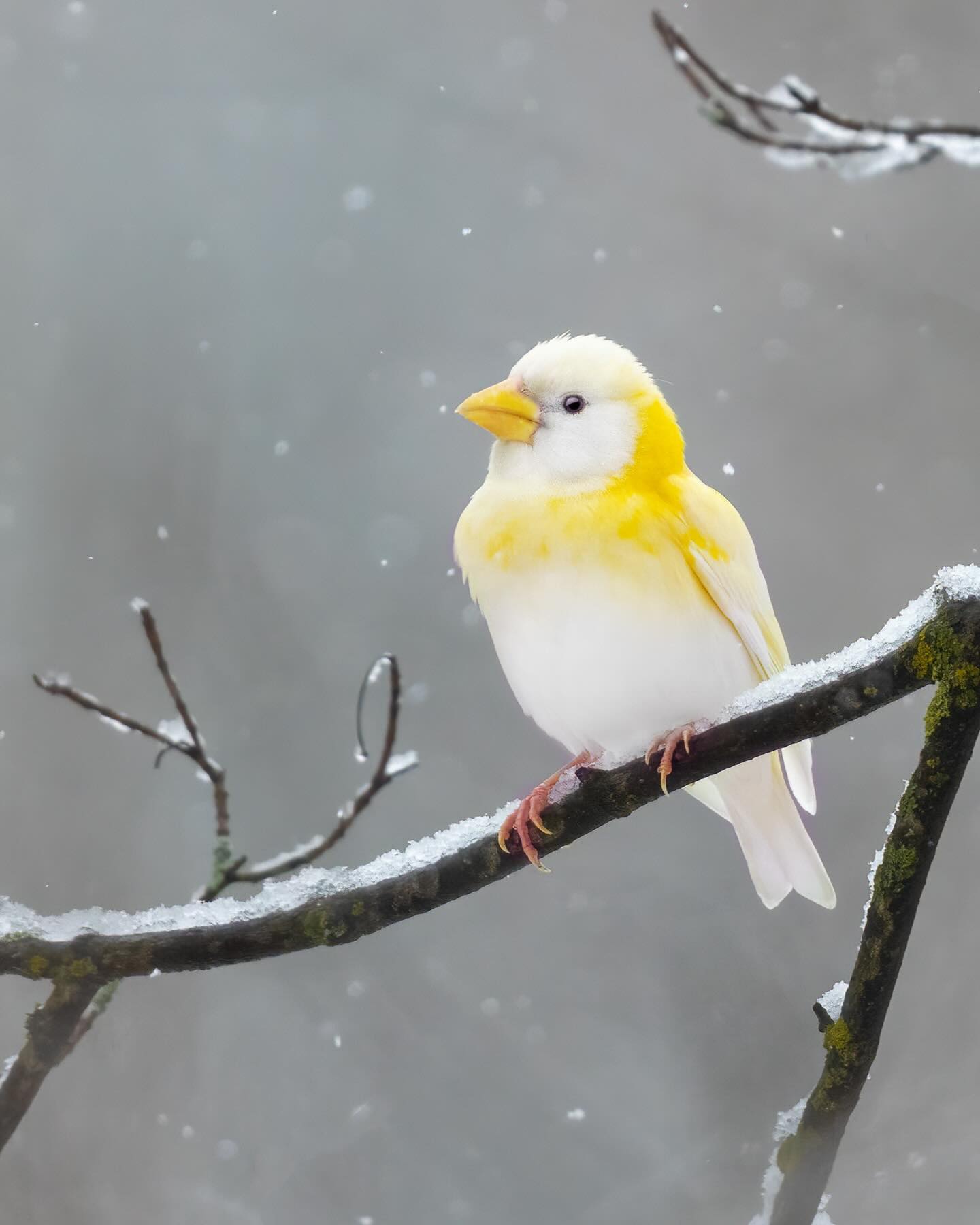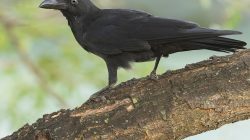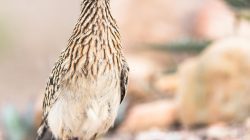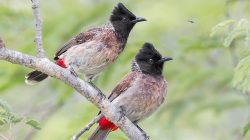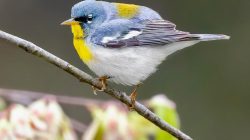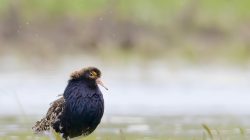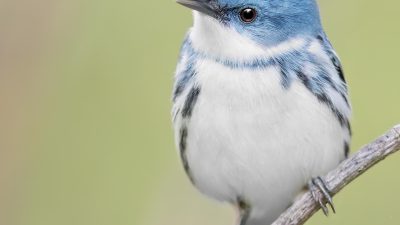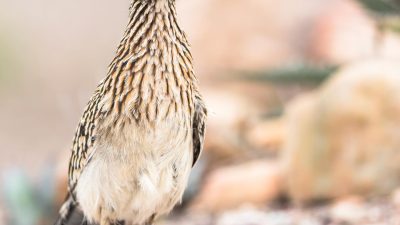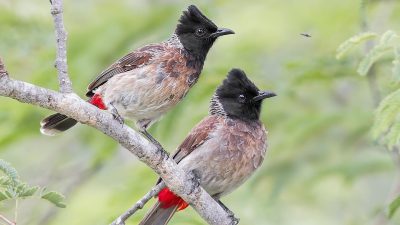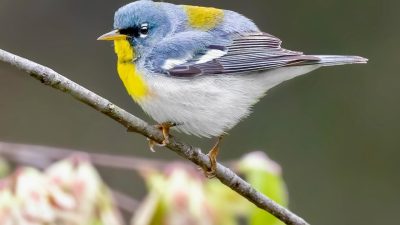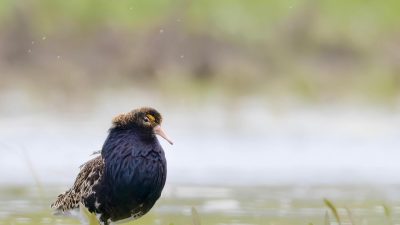Evening Grosbeak (Coccothraustes vespertinus): A Comprehensive Study of a Majestic Avian Species
Diajar.net – The Evening Grosbeak (Coccothraustes vespertinus) is a fascinating and striking bird native to the forests and mountainous regions of North America. Known for its large beak, bold plumage, and unique behaviors, the Evening Grosbeak has become a subject of interest for bird watchers and ornithologists alike. This article delves into the origin of its name, its appearance, distribution, geography, habits and lifestyle, diet and nutrition, population, number of populations, and conservation status.
Origin of Animal Name
The name of the Evening Grosbeak carries significant meaning, reflecting both its physical traits and its behavioral patterns.
Genus Name: Coccothraustes
The genus name Coccothraustes comes from the Greek words “kokkos,” meaning “berry,” and “thraustos,” meaning “crushing.” This is a reference to the bird’s powerful, thick beak, which is adept at crushing seeds and fruits. The bird’s ability to break open hard seeds, nuts, and other tough food sources is one of its most distinctive features, and this naming convention highlights its feeding capabilities.
Species Name: Vespertilinus
The species name vespertinus comes from the Latin word for “evening,” or “of the evening,” which refers to the bird’s tendency to become more active at dusk. While Evening Grosbeaks are generally active during the day, they are known to exhibit peak feeding activity during the evening hours, often coming out in large numbers during the late afternoon and into the evening.
Common Name: Evening Grosbeak
The common name, Evening Grosbeak, is a direct reflection of the bird’s tendency to be most active during the later part of the day, particularly at dusk, and its large, conical beak (which is characteristic of grosbeaks in general). The term “grosbeak” itself is derived from the French word “gros bec,” meaning “big beak,” referring to the bird’s large, thick beak used for feeding on seeds and other tough foods.
Appearance
The Evening Grosbeak is a medium-sized songbird, measuring about 20–23 cm (8–9 inches) in length, with a wingspan of approximately 35 cm (14 inches). Its bold and distinct appearance makes it easily recognizable, with a combination of bright plumage and a large, powerful beak.
Male Evening Grosbeak
The male Evening Grosbeak is striking, with a bright yellow body contrasted by black wings and a black tail, giving it a colorful and dramatic appearance. The male’s head is a rich shade of black, and it has a prominent white patch on its wings, which is especially noticeable when the bird is in flight. Its large beak is one of the most striking features, a bright ivory color that stands out against the darker head and body.
The vivid yellow coloration of the male Evening Grosbeak is complemented by subtle grayish streaks on its back and wings. The bird’s overall appearance is both bold and distinctive, and it is often described as having a “painted” look due to the stark contrasts between the colors.
Female Evening Grosbeak
The female Evening Grosbeak, while still colorful, has a more subdued coloration compared to the male. The female’s body is a yellow-olive shade, with more muted yellow tones. Her head is often a darker brown or grayish-brown, and she lacks the bold black coloration seen in the male. The female still has the characteristic white wing patch, but it is less striking than in the male. Overall, the female is more camouflaged, a strategy that helps with nesting and raising young in forested environments.
Both males and females have large, thick beaks that are well adapted for crushing seeds, particularly those of conifers and hard fruits.
Distribution
The Evening Grosbeak is found across North America, with its range extending from the northern United States through Canada, and southward into parts of Mexico. While the bird is more common in Canada during the breeding season, it also migrates to lower elevations during the winter months.
North America
The Evening Grosbeak’s distribution includes the Pacific Northwest, Rocky Mountains, and northern forests of Canada, particularly in the Boreal Forest and mixed woodlands. It is most commonly found in Canada, where it breeds in the coniferous and deciduous forests of the Canadian Shield, Alberta, British Columbia, and the Yukon. The species also ranges into the northern United States, especially in Minnesota, Michigan, New York, and Vermont.
During the winter months, the Evening Grosbeak migrates to lower elevations, where it can often be seen in suburban areas, feeding on bird feeders and fruit trees in regions such as Washington, California, and southern New England.
Mexico
While not as common in Mexico, the Evening Grosbeak can occasionally be found in higher elevations in the Sierra Madre and other mountainous regions. This species is more migratory in the southern parts of its range, with some individuals choosing to remain in Mexico year-round if food sources are available.
Geography
The Evening Grosbeak primarily occupies forested areas, ranging from deciduous to coniferous forests in mountainous and lowland regions. It is often found in forests with a mixture of hardwoods and evergreens, which provide both shelter and food for the species. These habitats offer abundant seeds, insects, and fruits that are essential to the bird’s diet.
In the northern parts of its range, particularly in Canada, the Evening Grosbeak is associated with Boreal Forests and temperate woodlands. In these regions, the bird thrives in habitats with a variety of coniferous trees, such as spruce, pine, and fir, which produce the seeds the Grosbeak feeds on.
In the southern United States, the bird is more commonly found in suburban woodlands, orchards, and parks that provide easy access to seeds and fruits. During migration, the Evening Grosbeak often travels through forested corridors, moving between the northern breeding grounds and the southern wintering areas.
Habits and Lifestyle
The Evening Grosbeak is known for its social and gregarious nature. It is often found in small flocks, particularly outside of the breeding season. These flocks can consist of anywhere from a few to a dozen or more individuals. The bird is especially social when feeding, often gathering in large numbers at bird feeders, trees with abundant fruit, or coniferous forests during the winter.
Breeding and Nesting
The Evening Grosbeak is primarily a monogamous species, with pairs forming in early spring. The female builds a cup-shaped nest, often in the branches of tall conifer trees. These nests are lined with softer materials such as feathers and moss, providing a safe environment for the eggs and chicks.
The male plays a key role in defending the territory and helping feed the female while she incubates the eggs. Once the eggs hatch, both parents take turns feeding the chicks, which are primarily fed on seeds and insects.
Diet and Nutrition
The Evening Grosbeak is primarily granivorous, meaning its diet mainly consists of seeds. It is particularly fond of conifer seeds, such as those from spruce, pine, and fir trees, but it will also consume seeds from hardwoods like maples and oak trees. Its powerful beak allows it to crack open the tough outer shells of seeds, making it highly efficient at feeding.
Other Food Sources
In addition to seeds, the Evening Grosbeak will feed on fruit, berries, and insects, especially during the breeding season when it requires additional protein to feed its young. Fruits like cherries, apples, and hawthorn berries are particularly attractive to this bird, and it will often be seen feeding on them in orchards or wild fruiting trees.
Population
The population of the Evening Grosbeak has historically been considered stable, though some fluctuations in numbers have been observed in specific regions. The species is currently listed as being of Least Concern by the International Union for Conservation of Nature (IUCN), due to its wide range and relatively stable numbers.
Population Trends
In some regions, such as Canada, the Evening Grosbeak has a strong presence, with significant numbers of birds breeding in the boreal forests. However, in other areas, especially the southern parts of its range, population numbers can vary year to year, depending on food availability and other environmental factors. There is evidence that the population has declined slightly in certain areas, particularly in urbanized regions where habitat loss is a growing concern.
Number of Populations
The Evening Grosbeak has several distinct populations across North America, particularly in the northern United States, Canada, and parts of Mexico. The population in Canada is the largest and most stable, particularly in the Boreal Forests and temperate woodlands.
Subpopulations and Migration
While some populations are sedentary, particularly those in the northern United States and Canada, others are migratory, moving to lower elevations during the winter months. The migration patterns are not uniform, as some Evening Grosbeaks remain year-round in southern regions, such as California and Arizona, while others travel to Mexico for the winter.
Conservation
Despite being classified as Least Concern, conservation efforts for the Evening Grosbeak remain essential. The main threats to its population include habitat loss, climate change, and the destruction of forested areas. As urbanization expands and forests are cut down for timber or agricultural use, the Evening Grosbeak’s habitats are increasingly fragmented.
Conservation Efforts
To protect the Evening Grosbeak, efforts focus on preserving forest habitats, particularly coniferous forests that are essential to the bird’s diet and nesting behavior. Additionally, creating protected areas and wildlife reserves helps ensure that the Grosbeak has access to its natural environment.
Conservation organizations are also working to address the impacts of climate change by monitoring changes in the bird’s range and behavior, as shifts in temperature and precipitation could disrupt migration patterns and food availability.
Conclusion
The Evening Grosbeak (Coccothraustes vespertinus) is a majestic and resilient bird that continues to thrive in forests and woodlands across North America. With its striking appearance, strong beak, and social behavior, it remains an important species in its ecosystem. Although its population is currently stable, continued conservation efforts are necessary to protect its habitats and ensure its survival in the face of changing environmental conditions. By preserving its natural environment and supporting sustainable land-use practices, we can help safeguard the future of this remarkable bird.
